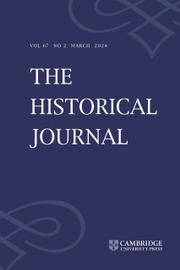DOMESTIC STATE VIOLENCE: REPRESSION FROM THE CROQUANTS TO THE COMMUNE
Published online by Cambridge University Press: 01 September 1999
Abstract
Putting down a revolt always risks seeing the legitimate use of force degenerate into an excessive and discredited repression, here called domestic state violence. Sergio Cotta's analytical model of the difference between force and violence helps to reveal the significance of various cycles of revolt and repression over three centuries of French history. Oscillations between measured coercive force and domestic state violence divide these three centuries into six stages: early absolutist (1594–1639), Louisquatorzian (1640–75), themistocratic (1675–1789), revolutionary (1792–5), late republican (1797–1802), and liberal authoritarian (1802–71). Continuities existed across all of these stages, such as the recourse to regular troops and summary justice; however, periods of rapid socio-political realignment caused the use of force to become domestic state violence. In order to overcome the alienation this produced, the state created new means of restricting its use of force while still protecting the new social order. The years 1797–1802 constituted the pivotal phase of this process because this was when so many methods of repression developed during the era between early absolutism and the Terror were revived, only now wrapped in the restraints of legal-rational authority. The resulting ‘liberal authoritarianism’ persisted until the 1880s without substantial changes other than growth in the sheer magnitude of repression.
Information
- Type
- Research Article
- Information
- Copyright
- © 1999 Cambridge University Press
Footnotes
- 8
- Cited by

